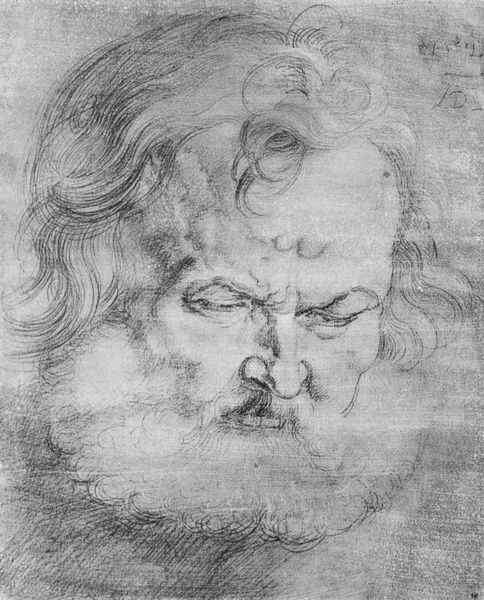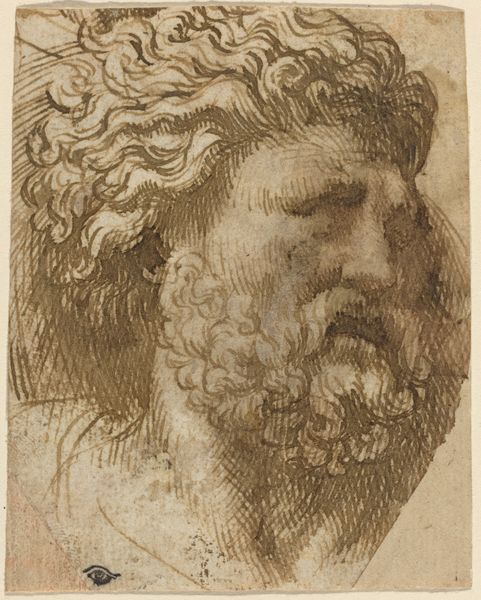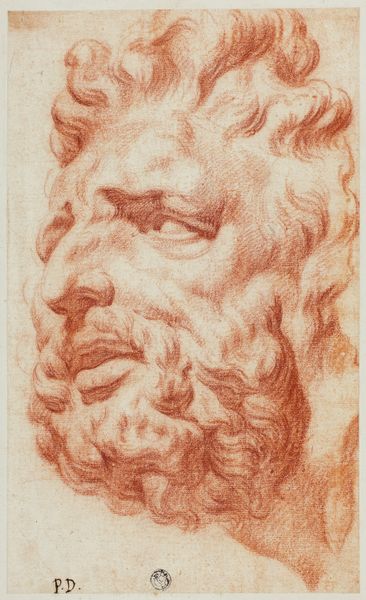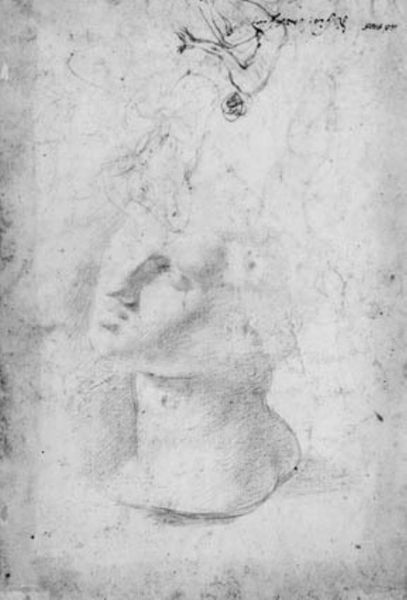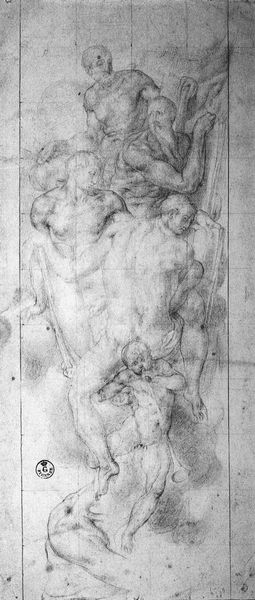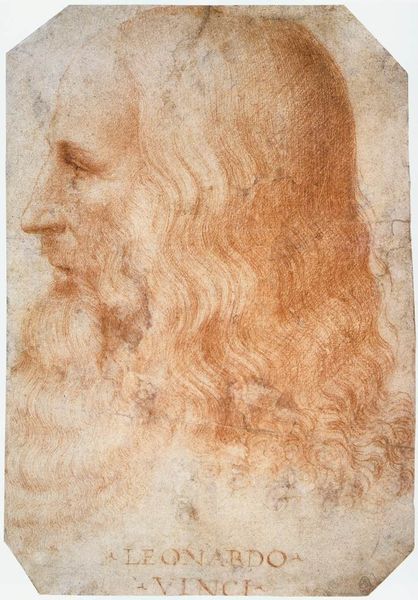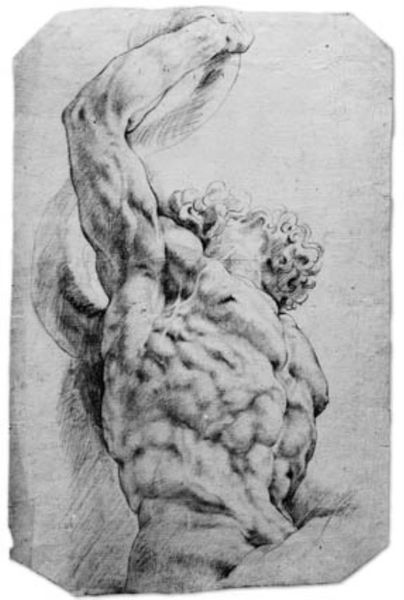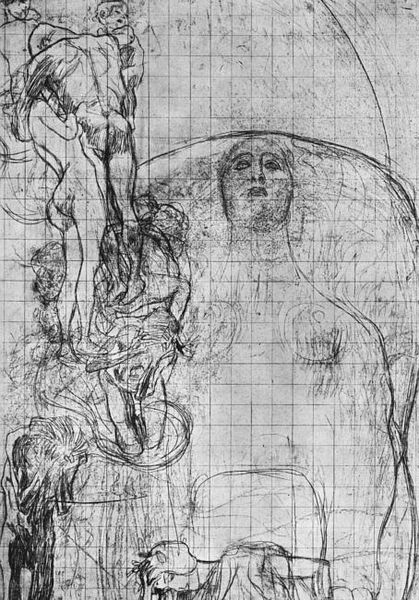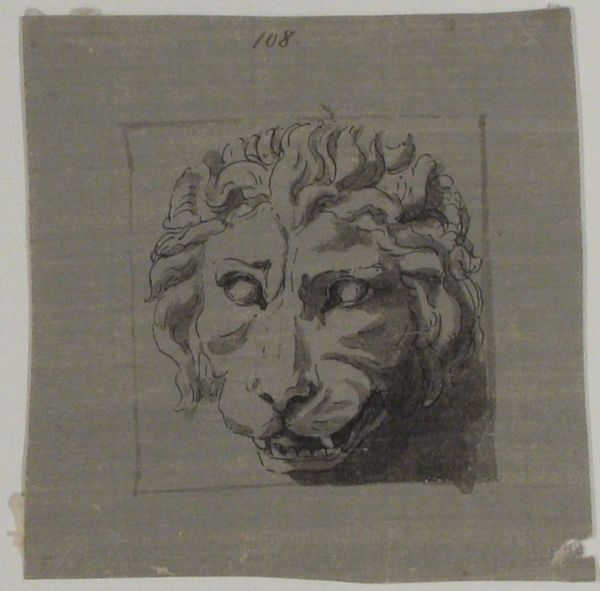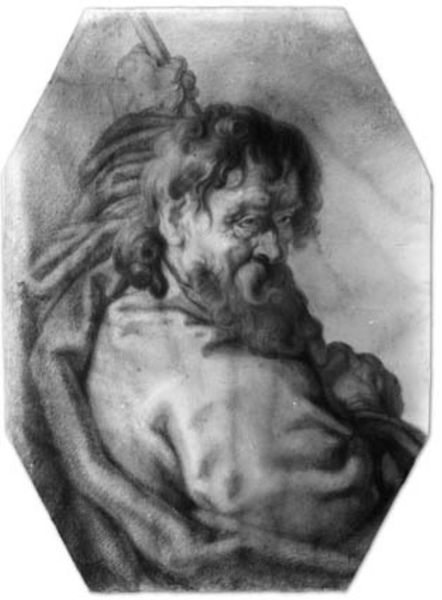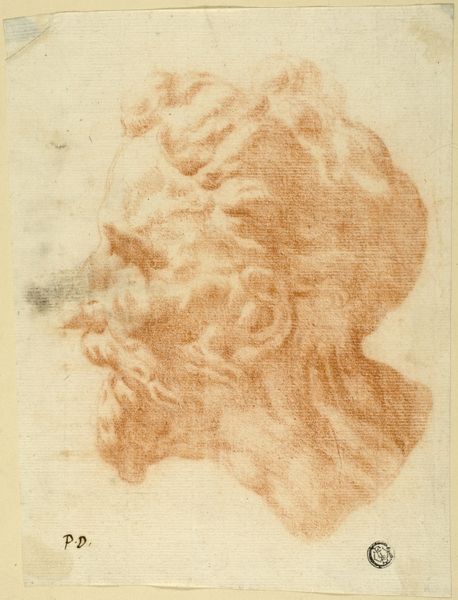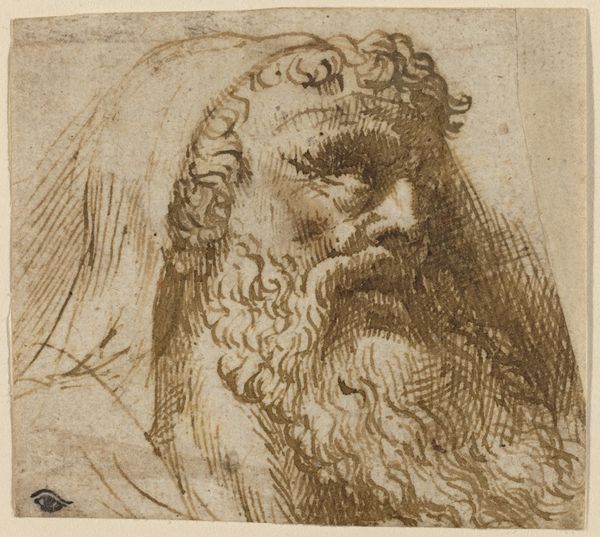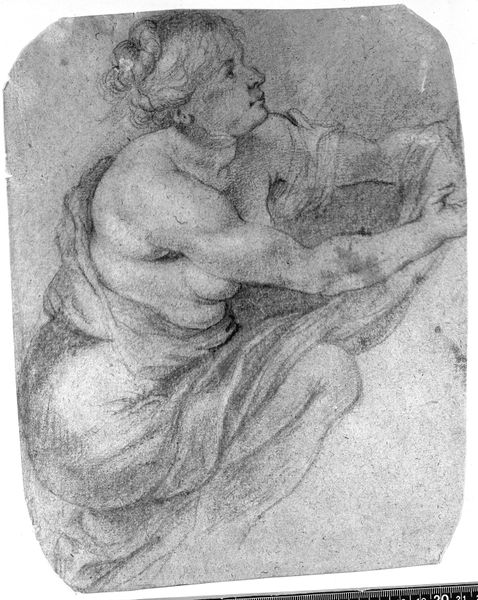
Head of a bearded man (a satyr?) in profile to the left, and a sketch of a smaller head in profile to the left 16th century
0:00
0:00
drawing
#
pencil drawn
#
drawing
#
amateur sketch
#
light pencil work
#
pencil sketch
#
incomplete sketchy
#
charcoal drawing
#
charcoal art
#
rough sketch
#
tonal art
#
charcoal
Dimensions: 292 mm (height) x 205 mm (width) (bladmaal)
Editor: Here we have an anonymous 16th-century drawing titled "Head of a bearded man (a satyr?) in profile to the left, and a sketch of a smaller head in profile to the left," residing at the SMK. It appears to be a charcoal or pencil sketch. It's fascinating to see the artist's process so clearly. What are your thoughts on the materials and the artist's apparent labor in creating this piece? Curator: The immediacy of drawing allows us a privileged look into artistic production. Consider the cheapness and availability of charcoal in the 16th century, a byproduct of everyday life now elevated to a tool for artistic exploration. This accessibility democratizes the artistic process. How might the ready availability of this material have influenced the kinds of studies produced during this period? Editor: That's interesting. It makes me think about the social status of drawing at the time. Was it considered a preparatory exercise, a sort of "craft," before being "art," which I imagine had implications in how people viewed the artist’s skill? Curator: Exactly. The labor involved, the physical act of repeatedly sketching, shading, and refining, becomes more visible. Is the ‘roughness’ and sketchiness here evidence of that preliminary process? Do the visible layers indicate a searching for the 'right' form, suggesting a material conversation between the artist, the tool, and the paper? How might the presumed social standing of charcoal impact interpretations of this work? Editor: I suppose if the material was deemed low-class, viewers may not consider drawings to be worthwhile compared to other artistic mediums such as paintings. However, its prevalence could mean wider access for budding artists and art appreciators. Thank you! It makes you realize the importance of context and available material in shaping art creation. Curator: Indeed. Examining art through the lens of materiality brings forth an understanding of artmaking and accessibility and reveals how social perception of readily available tools could inform art itself.
Comments
No comments
Be the first to comment and join the conversation on the ultimate creative platform.
